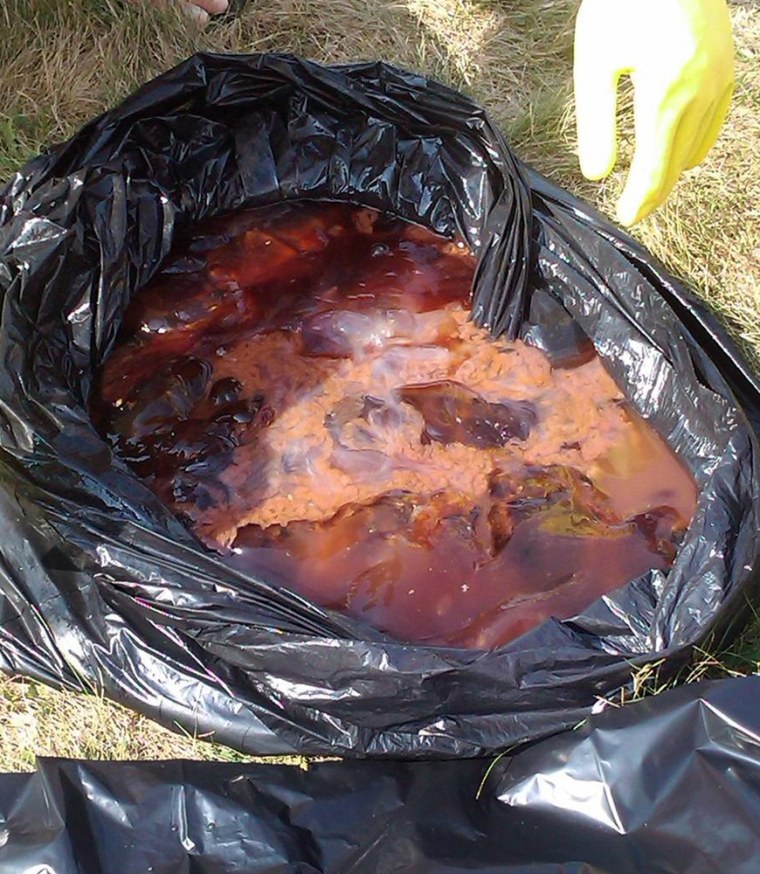How can one jellyfish sting up to 100 people? With lots of stinger-equipped tentacles, the largest jellyfish in the world may be up to the job, though scientists aren't sure if this week's mass stinging was the result of one jellyfish or more than one.
Reported Wednesday at Wallis Sands State Beach in Rye, N.H., between 50 and 100 beachgoers were treated for jellyfish stings likely from a lion's mane jellyfish (Cyanea capillata). Officials can't be certain one jellyfish stung all the people, though they didn't spot another giant blob.
"It is unlikely (essentially impossible) that one jellyfish could sting that many people, though," said John Costello in the Biology Department at Providence College in Rhode Island.
Though not a common occurrence, marine biologist Sean Colin says with such a large jellyfish, and so many trailing tentacles (not to mention those that break off in the water), the occurrence is feasible.
"It's certainly not common, but it's certainly in the realm of possibility, because they do have so many tentacles if they're that large. If they're broken up they could be all over the place," said Colin who is at Roger Williams University in Bristol, R.I.
Profile of a giant
This species is typically found in the cooler regions of the Pacific Ocean, Atlantic Ocean, North Sea and Baltic Sea. And they rarely show up on this beach. "I haven't seen anything like this in my life, said Brian Warburton, who has been with the New Hampshire State Parks department for six years.
All the action transpired in about 20 minutes, when Warburton and his colleagues administered first aid (vinegar treatment). "There wasn't time to sit and measure this thing. We just got rid of it," Warburton told LiveScience. "Think about a glob of Jell-O you're trying to pick up with two hands," he said, explaining the need for a pitchfork to pick it up.
The big guy likely rode a current to shore, Colin said in a telephone interview, suggesting there's a chance another lion's mane also hitched a current ride ashore.
When the 40-pound (18-kilogram) jellyfish arrived near shore, it appeared to be dead. But even a dead animal or a detached tentacle can sting a person, Colin said.
Tangle of tentacles
And the lion's mane isn't lacking in that arena.
The lion's mane jellyfish's sports a disk-shaped bell that can reach some 3.2 feet (1 meter) across, with its trailing thin tentacles extending more than 32 feet (10 m), according to the Australian Museum. Eight clusters of 150 tentacles each hang from the underside of its body.
Like other jellyfish, the lion's mane's tentacles are equipped with nematocysts, or capsules that contain a trigger and stinging structure. A single tentacle can be armed with hundreds or thousands of nematocysts, which get activated upon making contact with an object like a person's legs, according to the South Carolina Department of Natural Resources.
The larger the jellyfish, the more and longer tentacles. "In terms of a large lion's mane being able to sting so many people, I know from smaller ones say ones that are only 6 inches [15 centimeters] in diameter, those little ones the might have tentaclds that are trailing 5 or 10 feet [1.5 to 3 meters] behind them. So if you've got one much larger than that you can imainge how long the tentacles could be trailing," Colin said.
When spread out, the tentacles of the lion's mane jellyfish form a net-like trap through which only the teensiest animals can pass. In fact, this tangle of tentacles is often difficult for swimmers to avoid, which can mean painful stings for many, according to the Australian Museum.
Warburton said he didn't think the stings were too bad, though perhaps they seemed painful for children who aren't used to getting stung.
